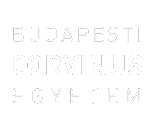Farkas, Laura Katalin (2022) The power of visual language in cinematic adaptations : Analysing immersive spectatorship using visual rhetorics and cinematography in the 1995 and 2005 versions of Pride and Prejudice. BA/BSc szakdolgozat, BCE Kommunikáció és Szociológia Intézet, Kommunikáció- és Médiatudomány Tanszék.
|
PDF
- Requires a PDF viewer such as GSview, Xpdf or Adobe Acrobat Reader
1MB |
Absztrakt (kivonat)
What makes a good film adaptation when there are so many? Is it the actors’ portrayal of the characters, the accuracy of the original story, or the way the film is edited or photographed? In general, the beauty of cinema lies in the perfectly balanced combination of all these aspects, however, in filmmaking, the emotional impact it leaves on the viewers is considered the most important factor of all. Meaning can be conveyed in many forms, for instance through music, acting, or dialogue, but visuality being the main medium of cinema, the significance of camerawork cannot be degraded. This thesis aims to analyse and compare two adaptations of Jane Austen’s novel Pride and Prejudice, the BBC series (1995) and Joe Wright’s film (2005) and see how certain shots express meaning through camerawork. I will focus on the importance of visuality in filmmaking by examining the main differences and similarities of the two interpretations of Austen’s story. Using theories of cinematography and visual rhetorics I will extract the same scenes from both and analyse their effect on the viewer’s sentiment. Camera movements, composition, zooming, focus shifting, and other techniques will be studied to find out how relationships, intimacy and passion between characters can translate to the audience through a camera lens. The main question of my thesis is whether cinematography does play a significant role on the viewers’ perception of the story and the preference between the two formats, by offering meaning beyond words. Having completed a content analysis of visual rhetorics in both versions, I had created focus groups of viewers who had not seen either one before to test my hypothesis.
| Tétel típus: | BA/BSc szakdolgozat |
|---|---|
| Témakör: | Média és kommunikáció |
| Azonosító kód: | 15284 |
| Képzés/szak: | Communication and Media Science |
| Elhelyezés dátuma: | 25 Jan 2023 13:00 |
| Utolsó változtatás: | 25 Jan 2023 13:00 |
Csak a repozitórium munkatársainak: tétel módosító lap

